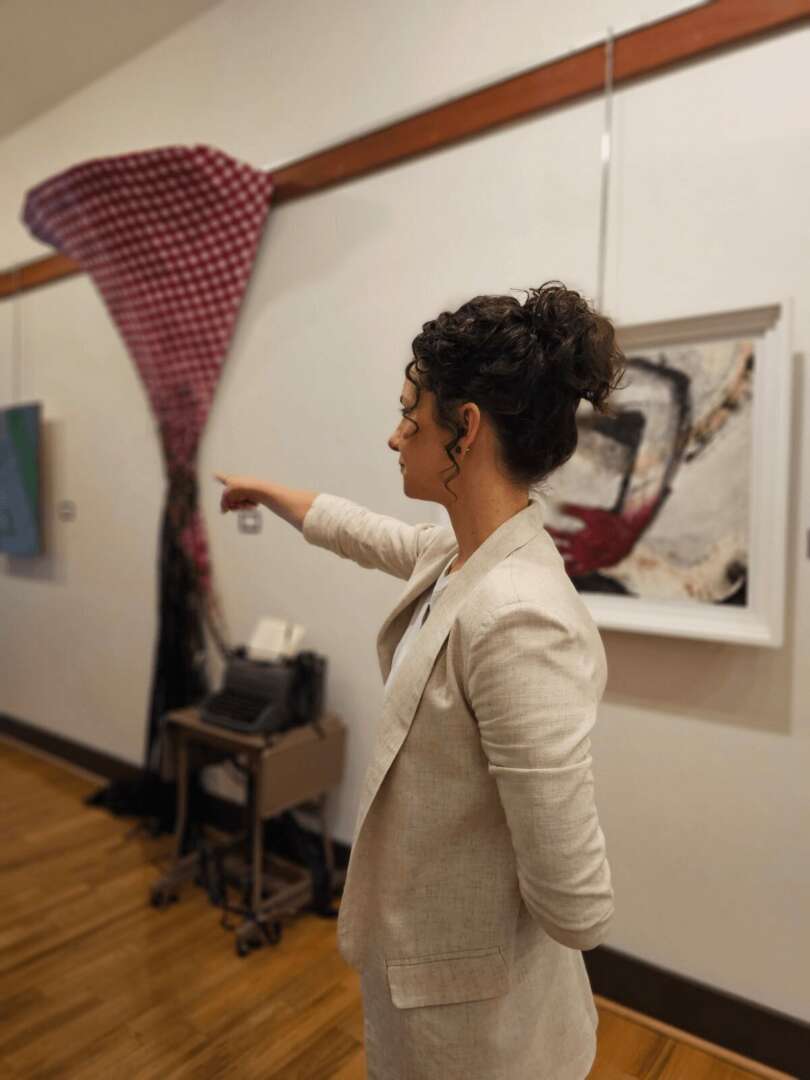We’re excited to introduce you to the always interesting and insightful Bernadette Renois. We hope you’ll enjoy our conversation with Bernadette below.
Hi Bernadette, thanks for joining us today. How did you learn to do what you do? Knowing what you know now, what could you have done to speed up your learning process? What skills do you think were most essential? What obstacles stood in the way of learning more?
I learn to make art by playing, experimenting and using an “anything goes” approach. Maybe ironically, I earned an Agribusiness degree from Cal Poly San Luis Obispo where the motto is “Learn by Doing.” While there are only a few elements of my higher education in business that serve my creative path now, that motto still manages to sum up how I progress as an artist.
I often say that my strength is my greatest weakness and my weakness is my greatest strength. Because I am not technically trained as an artist, I spend little time worrying if I am doing it right. My most shameless creativity comes through play. When I find myself saying, “I have no idea what I’m doing,” that usually means I’m headed toward a valuable creative outcome.
I tend to lean on my own intuition or brainstorm with fellow studio mates at Open Ground Studios where I work, in Seaside, CA. Once a year I participate in Sketchbook Revival with Karen Abend which is abundant with new and accessible ways to create. In addition, I lean on Monterey Bay based artist, Paul Richmond, when I need support with problem solving. I prefer to look inward for my next creative choice and am grateful for the creatives around me who offer inspiration.
Knowing what I know now, I wish I would’ve been less attached to what I was making early on. I keep my first ‘sketchbook’ next to my workspace so I can remind myself and share with others how much my process and comfort in the making has evolved. Those early pages were a struggle to complete and are uncomfortable to look at even now but four and a half years later and I’m prolifically filling a 600 page ‘very big sketchbook’ by Art Alternatives.
I was and continue to be my greatest obstacle. It took me several years to accept myself as an artist and I am still working toward valuing this path for myself. Even with inner resistance, I show up as an artist every.single.day.

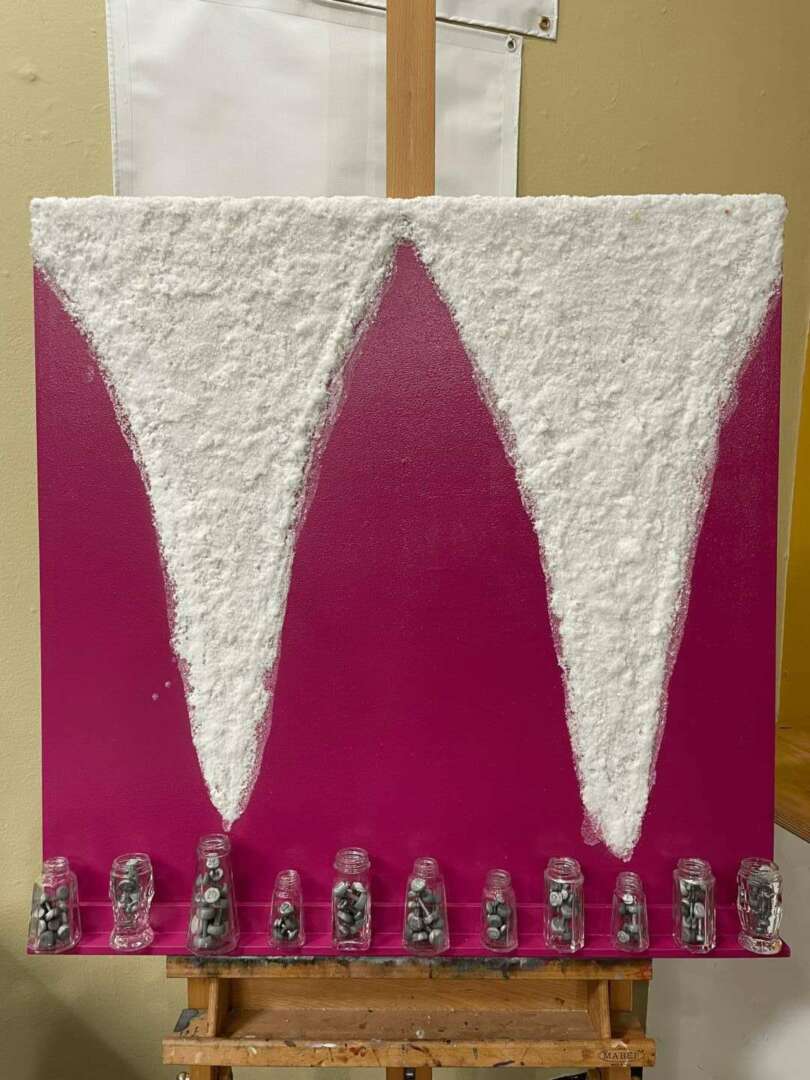
Bernadette, before we move on to more of these sorts of questions, can you take some time to bring our readers up to speed on you and what you do?
My earliest creating – weaving, sewing and embroidery – was passed down to me by my mom. As a child, I was obsessed with beads and learned to braid hemp so I could make my friends custom jewelry. Then in my teen years I found scrapbooking which is still part of my creative repertoire. Once I became a mom, the urge to express myself creatively became undeniable. After meeting a beloved art mentor, I started to make more art. In March 2021, I became a coop member at Open Ground Studios and a year later, retained a dedicated space.
Currently, I share my art through in-person events including local festivals, the annual Open Studios Art Tour, exhibitions and studio events. Social media does not resonate with me as I value face to face connection, but I am struggling with figuring out meaningful ways to share my art. I find myself wondering which promotional tools align with my values and let me inspire others and make new connections.
I have thought of myself as a ‘good girl’ most of my life and being an artist brings out my delayed rebellious side. My defiance to promote art in today’s media culture and my desire to blend taboo topics, my emotional growth and other life callings keep me feeling like an outlier. For example, in the way that I identify as an artist, I am also a trail runner. I am convinced that I can blend my visual storytelling with my experiences of running many miles in nature, but finding the appropriate landing spot for this kind of art escapes me. Additionally, I recently made a stack of textured vulvas on paint swatches which I pass out to my female identifying friends when they need a pick me up. I struggle with the idea that art is meant to be placed where people looking for art get to see it. Brainstorming ways to make art more accessible to everyone takes up a good chunk of cognitive space.
I recently started working in the classrooms of my kids’ elementary school, introducing mindful mark making. A fellow studio mate, Eva Boynton, and I are planning an adult workshop later this month. Leading mark making sessions continues to reveal how many of us resist being creative even in the simplest ways. By second grade, some children believe that there is no point in trying if they are not ‘good enough’. This story stays with so many of us and I witness deep discomfort in adults just at the thought of sketching a line.
It feels good to trust myself and to keep making art that represents me. My art is about process, play, being inspired, expressing my experiences and in the most successful cases, inspiring others to create and live authentically.
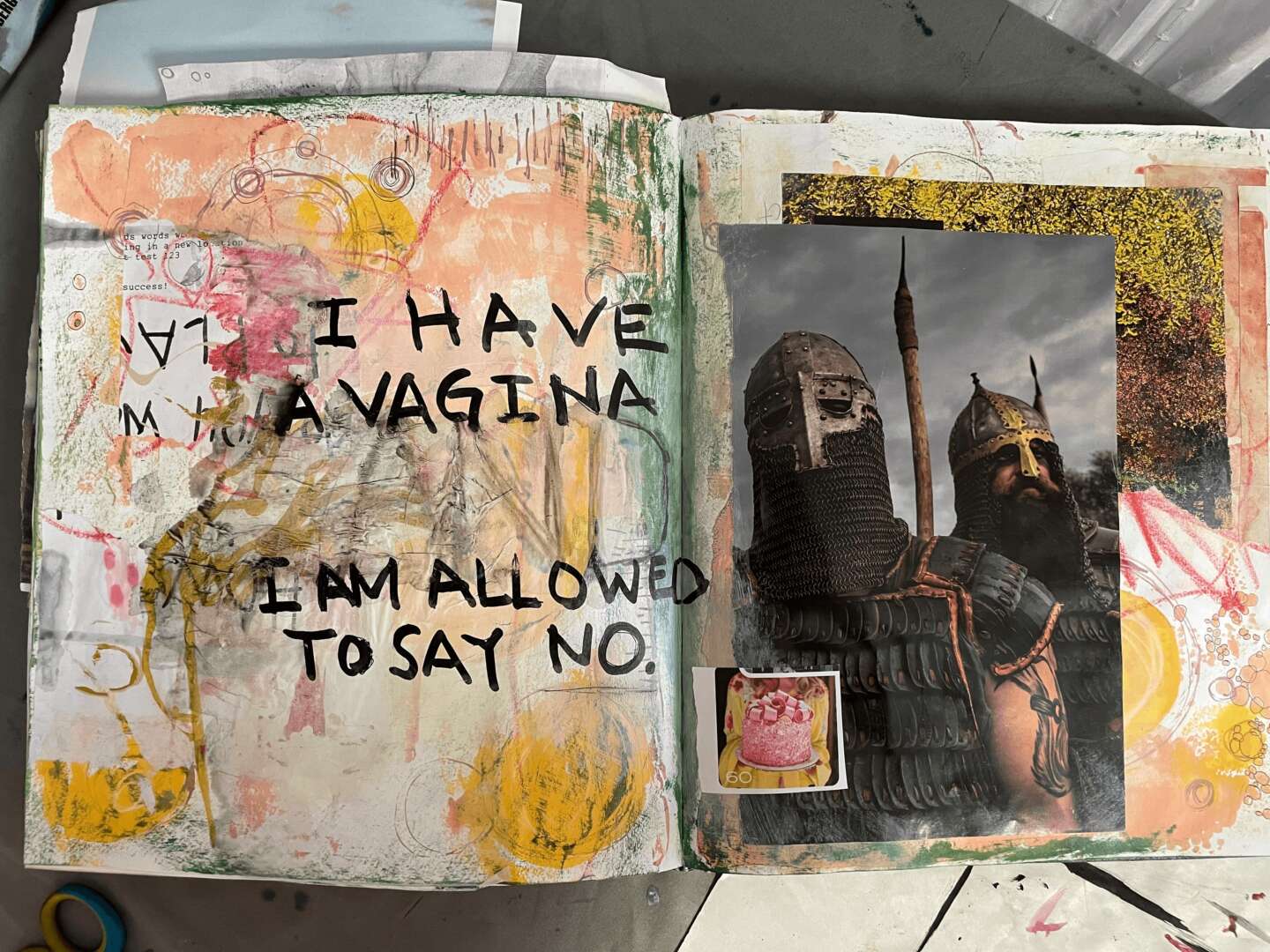

Are there any books, videos or other content that you feel have meaningfully impacted your thinking?
The book “Born to Run” by Christopher McDougall changed my life. Yes, it is a book about (very) long distance running but stay with me here. I read it during a flight in late 2021 then did a deep dive on ultra trail running a few days later where I came across an elite runner, Courtney Dauwalter. After a few podcasts and YouTube videos (I also highly recommend any videos by Billy Yang), I realized that I was massively underestimating myself. I have been a runner most of my life, but like my creative self, treated it like a practicality. Seeing the way this professional athlete embraced her unique running style gave me permission to trust that trail running was more meaningful to me than just going for a run. Shifting from running for the sake of exercise to running on trails, revealed to me an untapped creative portal and sense of confidence.
I realized that I can happily run for a long time. I am by no means fast which does not matter out there. Honoring my running pace helped me to see that I do not have to be quick in my creative process either. I used to feel frustrated with how long it would take me to finish a project but now I accept and honor my slow and steady pace. In addition, I must plan well to execute a successful training plan for long distance races. I now use the same planning tools in completing pieces for exhibition deadlines. In summary, reading this book cracked open my perception of personal limits, reinforced to me that another person can profoundly inspire me and that sometimes we need to look outside the art world for motivation and innovation.
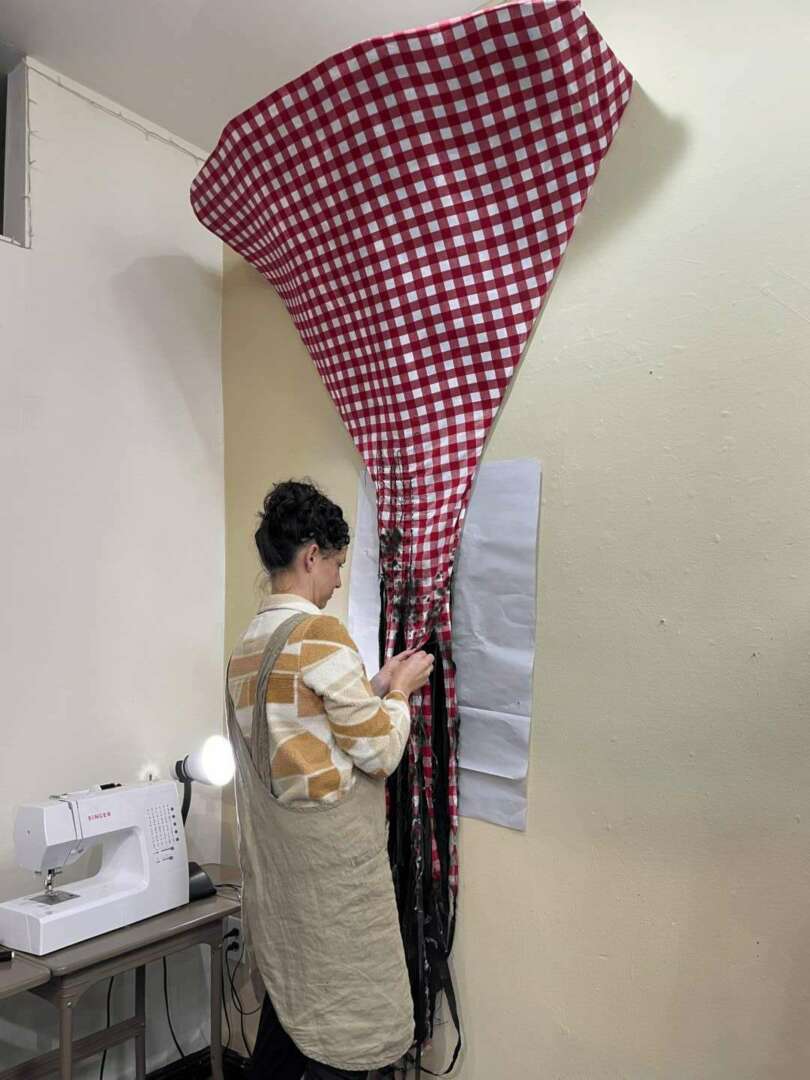
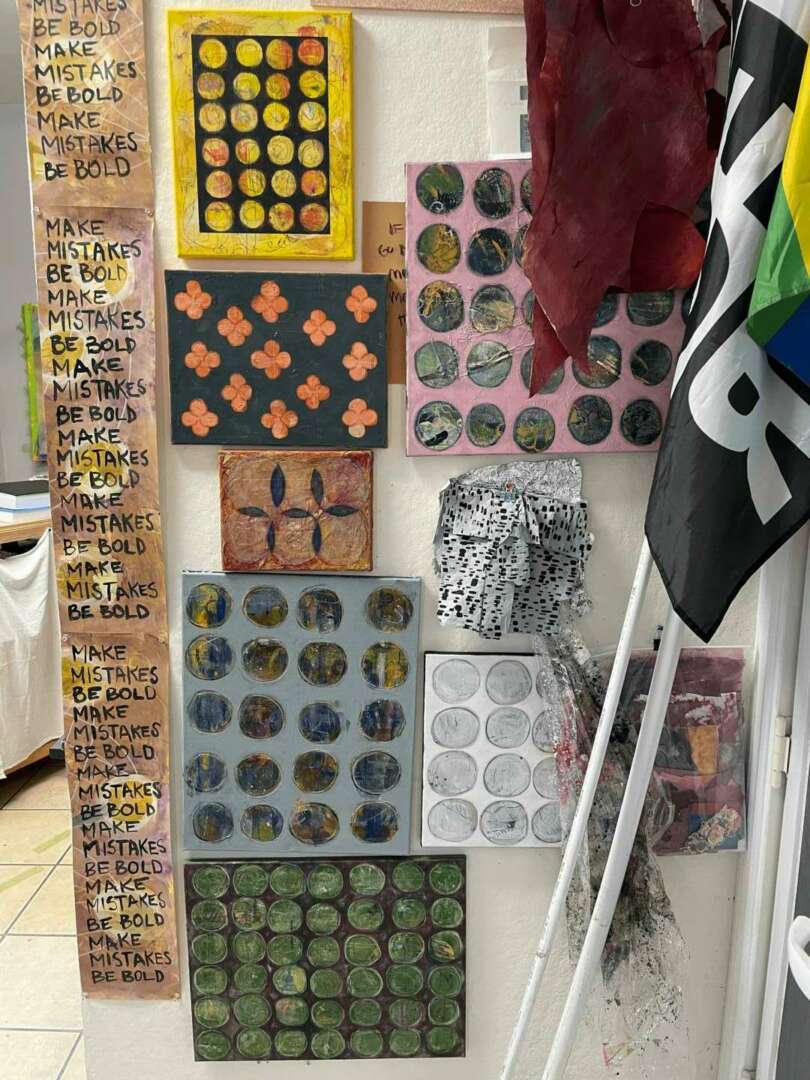
In your view, what can society to do to best support artists, creatives and a thriving creative ecosystem?
Creative confidence exists in most children but by early grade school it falters. By adulthood, creativity is perceived as a cute pastime or inaccessible because someone can only draw ‘stick figures’. Creative confidence and the choice to create can nurture our emotional growth, professional skills, relationships, self care and more!
I believe that we need to remove judgement of creativity especially in the education system. As parents, teachers, influencers and mentors, we can remove the idea of good or bad and right or wrong and replace it with like or dislike. For example, when a child asks you (or you ask yourself), “Is this good?” consider reframing the question to “How did you feel when making it?” or “Do you like to look at it?” I enjoy the message of artist Michele Cassou and try to keep questions opened ended when working with kids and adults alike. My favorite way to create is when I channel my 7-year-old self. Imagine if more people could create without shame, no matter their age or skill set. After love, creativity might be the next best path to a fulfilled life.
Contact Info:
- Website: https://www.opengroundstudios.com/
- Youtube: https://youtu.be/BjgP2gHktSI?si=ftcyLTo1UXzZNrHK&t=1653

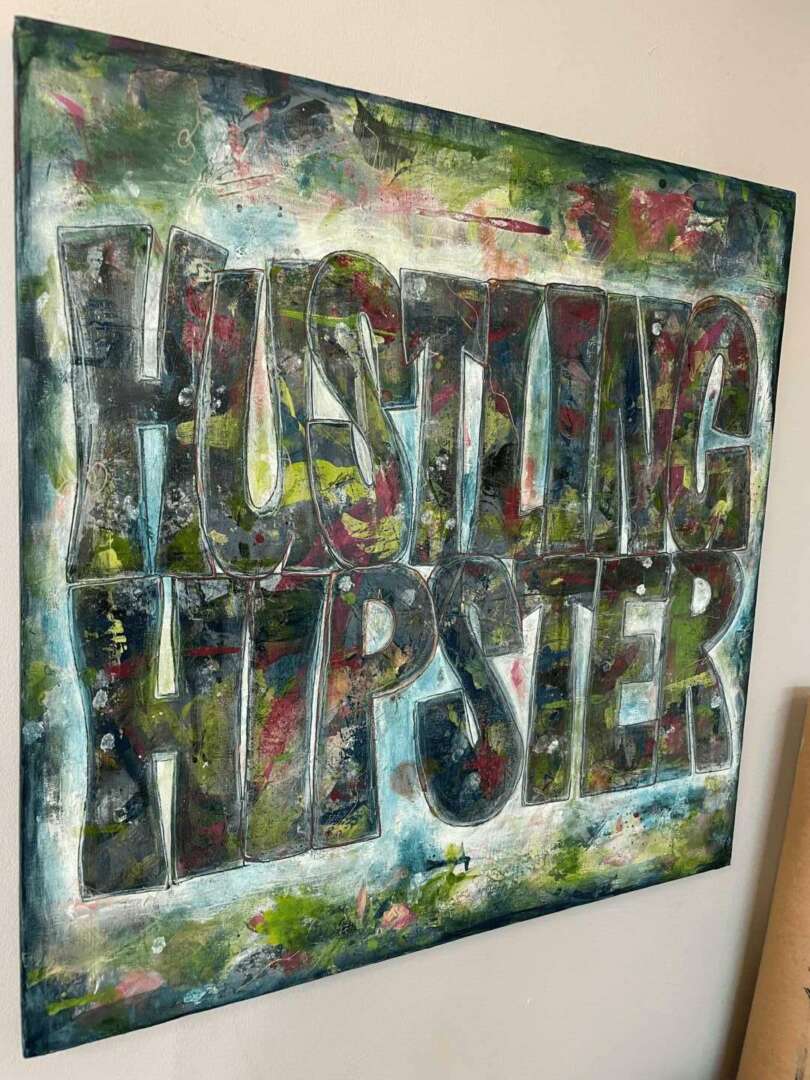
Image Credits
Bernadette Renois


